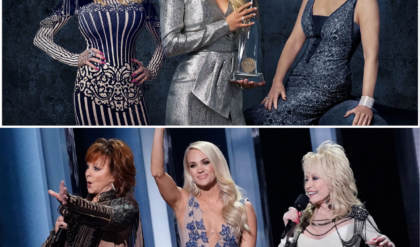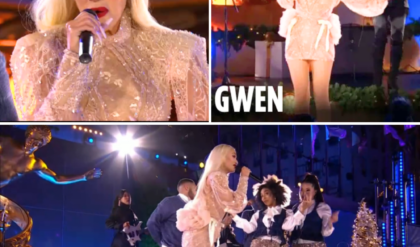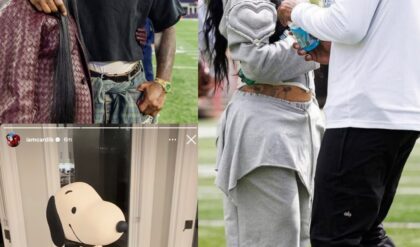Showrunner Abe Sylvia tells TheWrap about crafting a relentlessly positive antihero in Kristen Wiig, and how he ensured Carol Burnett would shine — even from a coma.

“Palm Royale” plunges viewers into the sunny, glitzy world of 1960s Palm Beach high society, only for the glossy facade to break down before our eyes.
While the pastel color palette and larger-than-life characters of “Palm Royale” tease a glamorous ride rivaling the likes of “The Devil Wears Prada” or “Crazy Rich Asians,” showrunner Abe Sylvia wasn’t keen on giving audiences the escape they craved without examining the true cost of the extravagance.
“I don’t want escapism for escapism sake, so I found ways to subvert that at every turn,” Sylvia told TheWrap, noting that he turned in his first draft for the pilot just as the pandemic started. “I wanted to make a show that was a delight to watch — that doesn’t mean it doesn’t have deeper implications, or it isn’t a metaphor for larger social anxieties that are going on. It’s still a frothy good time, even as you’re asking bigger questions.”
The Apple TV+ show, which releases new episodes on Wednesdays, follows the quest of outsider Maxine Simmons (Kristen Wiig) as she attempts to enter the Florida town’s most exclusive club, the Palm Royale. Set in 1969, Maxine finds herself caught between battling cultures — the ritzy charity balls ruled by self-serving housewives (played by Allison Janney, Leslie Bibb and Julia Duffy) and an underground women’s rights group (led by Laura Dern and Amber Chardae Robinson).
As Sylvia layered in issues plaguing that pivotal year — including fallout from U.S. involvement in the Vietnam War, growing class division and abortion rights, just to name a few — he looked to Slim Aarons’ photographs to spotlight the “beautiful tension” between the laid-back lives of 1970s Palm Springs socialites and the social upheaval just beyond their white picket fences.
“You have the emerging civil rights struggles and gay people at Stonewall in 1969, throwing that first brick, and yet, you look at these photos, and there’s no sense of that,” Sylvia said. “We all, as human beings in a world that’s going crazy, desire safety — we desire a beautiful world. We make ourselves intentionally deaf in order to be happy, but the real world will always creep in anyway.”
This mentality is a guiding principle for Maxine, who attempts to drown out the growing social anxieties from both inside the Palm Royale and outside of it through her relentless positivity, positioning her as an unlikely antihero.
“I wanted her to be optimistic, as much as she was trying to bust into this world — she’s not always ethical, but she’s always decent,” Sylvia said. “I felt like that was a new take on what is the typical antihero that we’re used to seeing where we love them for being bad.”
Instead, Sylvia made Maxine a character that audiences will find themselves rooting for as she strives to seamlessly finesse her way into security among the rich and powerful socialites.
“As human beings, but I think particularly as Americans, we all relate to this idea of that better version of myself is somewhere else,” Sylvia said. “It’s not just about wanting money — it’s about wanting acceptance. It’s about wanting to be seen for who we are, but meanwhile, we always think there’s a better version of ourselves somewhere — ‘If only I worked harder, I would get there.’”
The impetus for “Palm Royale” began when producing partners Dern, Jayme Lemons and Katie O’Connell optioned Juliet McDaniel’s book “Mr. & Mrs. American Pie,” and eventually tapped “The Help” director Tate Taylor and Sylvia to adapt the novel.
Sylvia transitioned the book’s setting from Palm Springs to Palm Beach, opening up the world of charity ball circuits. He also crafted a feminist bookstore as the playing ground for Dern’s character and concocted a layered saga between Maxine and longstanding Palm Royale royalty Norma (Carol Burnett).
Wiig was quickly attached as the Apple TV+ series’ star, and Sylvia recalled the cast growing from there as the show collected a “murderer’s row of talent,” including Burnett, Janney, Bibb, Ricky Martin, Josh Lucas, Bruce Dern and Kaia Gerber.
“It became this party that Laura was hosting, like, ‘Come on everybody, let’s go put on a show in the barn,’ and it sort of snowballed from there,” Sylvia said. “As the people came on, it was such an embarrassment of riches that we went back to the writers’ room as we were adding these people … ‘What have we not seen this actor do? What would we get in trouble for if we don’t let the audience see them do?’”
With scripts written, each talent addition prompted Sylvia and the writers to reconsider how to let each star shine. The showrunner compared the process to a costume fitting, saying, “You drape the script on that particular actor and make sure that fits like a glove.”
That was certainly the case when TV legend Burnett came aboard to play Norma, whose character is notably in a coma. As the team considered how to make Burnett shine while portraying a character unconscious and in a wheelchair, they realized the conditions could work to their advantage.
“The limitations that we imposed on the character were exactly the things [that made it] the perfect platform for a comedian,” Sylvia said. “If you go back to the Hollywood production code, all the ways in which a comedy had to get around talking about sex made the shows and the movies wittier.”
The first four episodes of “Palm Royale” are now streaming on Apple TV+, with new episodes dropping Wednesdays.





